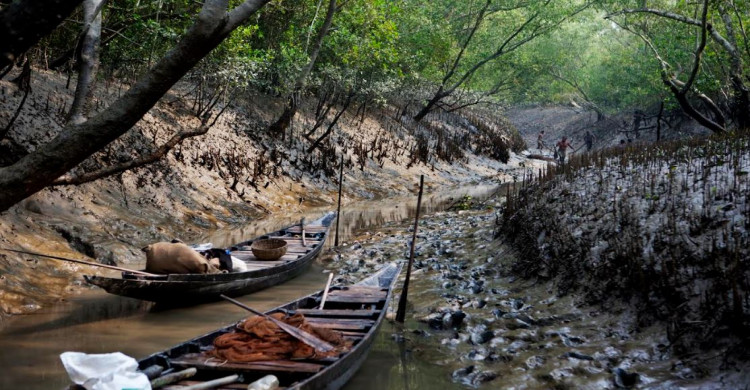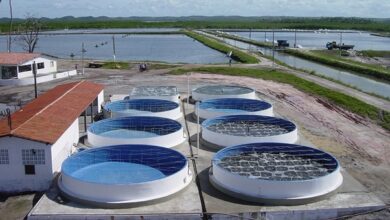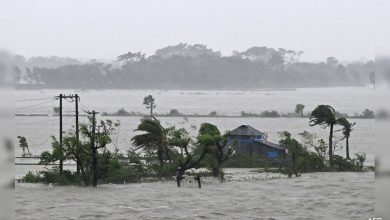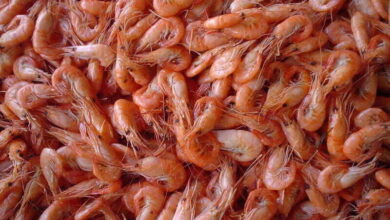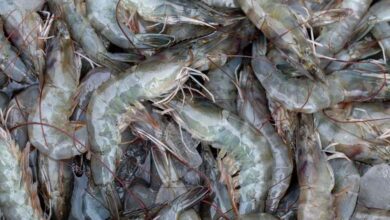The Sundarbans, the world’s largest mangrove forest and a UNESCO World Heritage Site, stands as a natural shield protecting Bangladesh from devastating cyclones, tidal surges, and rising sea levels. However, this vital ecosystem is now facing an existential crisis. Beyond climate change, industrial pollution, and illegal logging, an even more immediate and insidious threat looms over the Sundarbans—widespread poison fishing.
This dangerous method of fishing, where toxic chemicals are deliberately dumped into rivers and canals to kill fish en masse, is wreaking havoc on aquatic biodiversity, endangering wildlife, and posing serious risks to human health. The alarming rise of this practice has been attributed to a powerful syndicate of corrupt traders, dishonest forest officials, and criminal networks that profit at the expense of one of Bangladesh’s most valuable ecological treasures.
The rise of poison fishing in Sundarbans: A Well-Orchestrated Operation
Investigations reveal that at least three major groups are responsible for fueling the illegal practice of poison fishing in the Sundarbans:
- Fish Traders and “Company Mahajans” – These influential traders finance local fishermen and pressure them to use poison to ensure a higher catch within a short time. By controlling the fish supply, they reap massive profits.
- Corrupt Forest Officials – Dishonest officers, tasked with protecting the Sundarbans, accept bribes in exchange for turning a blind eye to the poison fishing. Some even actively assist in the transport and sale of poisoned fish.
- Forest Pirates and Middlemen – Once inactive, many former forest pirates have returned, this time working as enforcers for the traders. They offer protection to those engaged in illegal fishing while threatening or looting others who refuse to comply.
How the poison fishing Work in Sundarbans
Fishermen use two types of toxic chemicals, depending on their target catch:
- Chlorpyrifos and Cypermethrin – These chemicals are commonly used in agriculture but have been repurposed to kill both white fish and shrimp when mixed into the water.
- Cypermethrin Alone – This is used exclusively to kill shrimp.
Once the chemicals are released into the water, they deplete oxygen levels, causing fish to become weak and float to the surface, making them easy to collect. This method is quick, cost-effective, and highly destructive—not just for fish, but for the entire aquatic ecosystem.
Severe Impact on the Sundarbans Ecosystem
The consequences of poison fishing extend far beyond fish populations. Experts warn that these chemicals are absorbed into the mangrove roots, affecting the entire food chain.
- Declining Fish Stocks – Traditional fishermen report a steep decline in fish populations over the past five years, forcing many to abandon their livelihood.
- Loss of Aquatic Biodiversity – Poisoned rivers have led to the disappearance of snakes, frogs, leeches, and crabs, all crucial components of the Sundarbans’ ecosystem.
- Impact on Wildlife – Birds feeding on poisoned fish suffer slow and painful deaths, contributing to declining populations of species already threatened by habitat destruction.
According to Govinda Mandal, a fisherman from Koyra’s Bedkashi area, poison fishing was non-existent just a decade ago. “There were plenty of fish back then. But over the last five to six years, poisons have flooded the forest waters, and now even the birds are disappearing,” he laments.
A Threat to Human Health
Even though locals avoid eating fish from the Sundarbans, these poisoned fish end up in markets across the country, transported by trucks to Dhaka and other major cities. Consumers are unknowingly exposed to dangerous toxins linked to cancer, liver disease, and neurological disorders.
A researcher, Md Shah Paran, working on a project assessing the aquatic resources of the Sundarbans, confirmed that most fish in local markets smell of poison, particularly shrimp. Despite this, traders continue selling them, prioritizing profits over public safety.
The Role of Corrupt Authorities
Local pesticide shops near the Sundarbans, particularly in Koyra, openly sell chemicals like Diamgro, Fighter, Ripcord, and Pesicol. Strangely, many of their buyers don’t even own farmland—they are fishermen purchasing poison under the guise of agriculture.
Authorities have long been aware of these illegal activities but have done little to stop them. Mihir Kumar Doe, Forest Conservator of the Khulna region, confirmed that bottles of poison have been confiscated multiple times, yet the problem persists.
Fishermen who refuse to participate in the poison trade report being threatened by both criminal groups and corrupt officials.
A former fisherman, who served jail time for poison fishing, revealed their method:
- Fishermen set small nets across canal openings during high tide.
- When the tide recedes, they pour pesticides into the water.
- Fish float to the surface within minutes.
- The poisoned fish are collected and transported to buyers.
Since freshly poisoned shrimp cannot be immediately sold, traders have devised another method: drying them inside the Sundarbans itself.
- They cut down trees deep in the forest to construct makeshift drying platforms.
- Shrimp are dried using wood-fueled fires before being smuggled to Mongla for distribution.
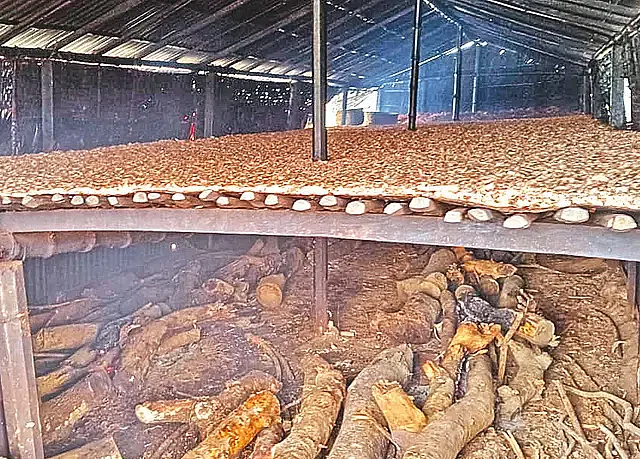
The Political and Social Consequences
The rampant corruption and illegal exploitation of the Sundarbans have also given rise to a power struggle among criminal groups. Reports indicate that powerful middlemen, including Zahir Member, Rezaul Karim, and Lutfor Rahman, control more than 200 boats, operating under the protection of corrupt forest officials.
Forest guards allegedly demand bribes ranging from Tk 1,000 ($10) per week to Tk 5,000 ($50) per boat, allowing illegal fishing to continue unchecked.
One such trader, Abu Musa, openly admitted his involvement in illegal fishing but suggested “dividing the sanctuary among traders” to reduce competition.
Can the Sundarbans Be Saved?
Despite these overwhelming challenges, conservationists believe that decisive action can still reverse the damage. Gaurang Nandi, Chairman of the Center for Environment and Participatory Research (CEPR), emphasized the urgent need for:
- Stronger Law Enforcement – Crackdowns on corrupt officials and poison traders.
- Sustainable Fishing Alternatives – Promoting eco-friendly aquaculture methods.
- Public Awareness Campaigns – Educating consumers about the dangers of poisoned fish.
- Stricter Regulations – Enforcing harsher penalties for offenders.
Final Thoughts: A Ticking Time Bomb
Conservationists stress the need for immediate intervention to halt poison fishing. They advocate for stricter enforcement, improved monitoring, and sustainable fishing alternatives.
The Sundarbans serves as Bangladesh’s shield against natural disasters and is a crucial carbon sink. If its waters continue to be poisoned, the consequences will be catastrophic—not just for the environment but also for the millions who depend on it for their livelihoods. Urgent action is required to protect the future of this invaluable mangrove forest.

